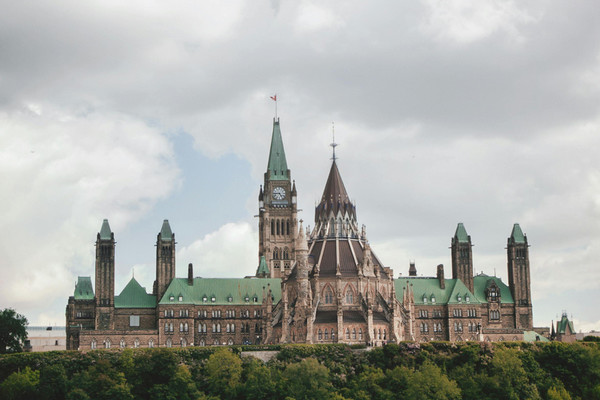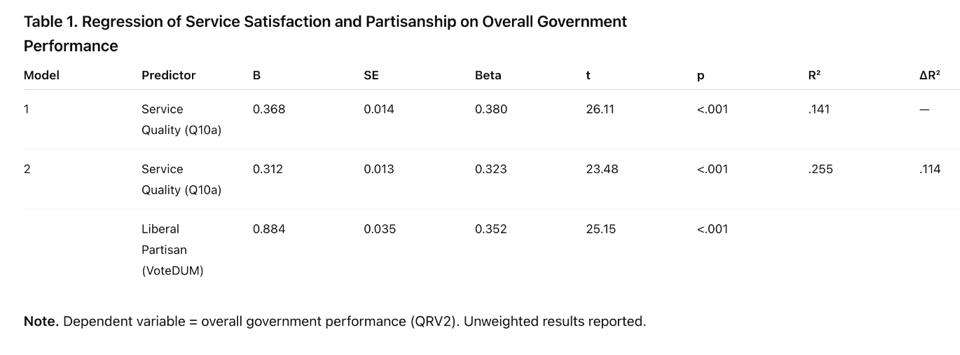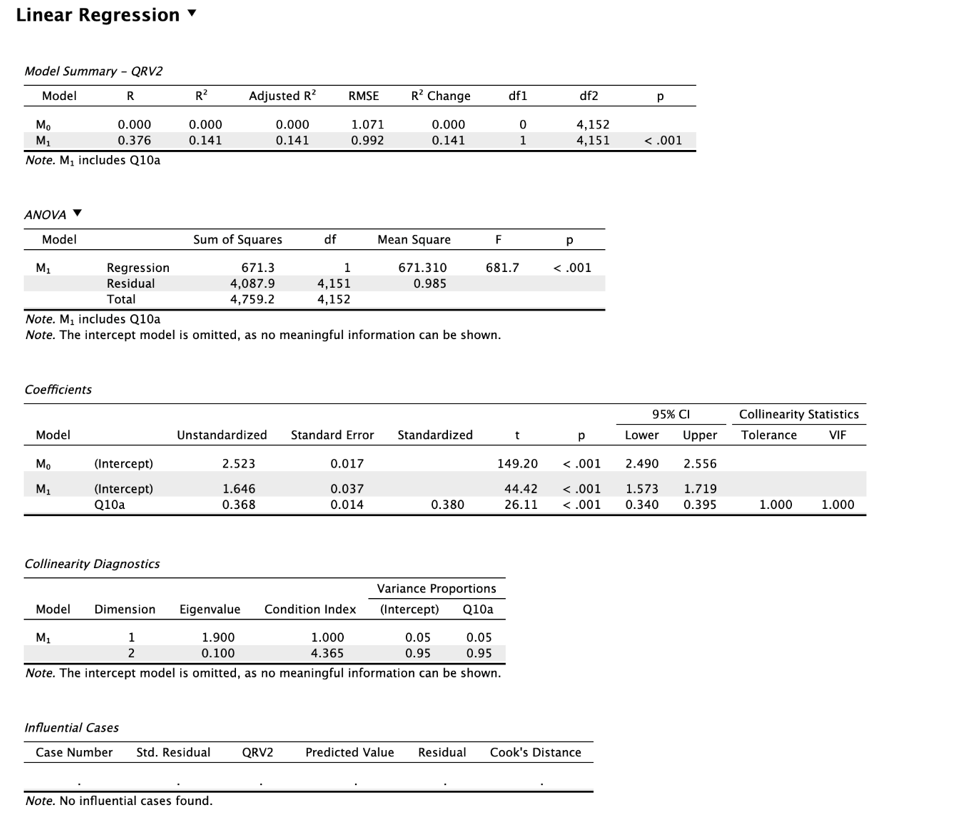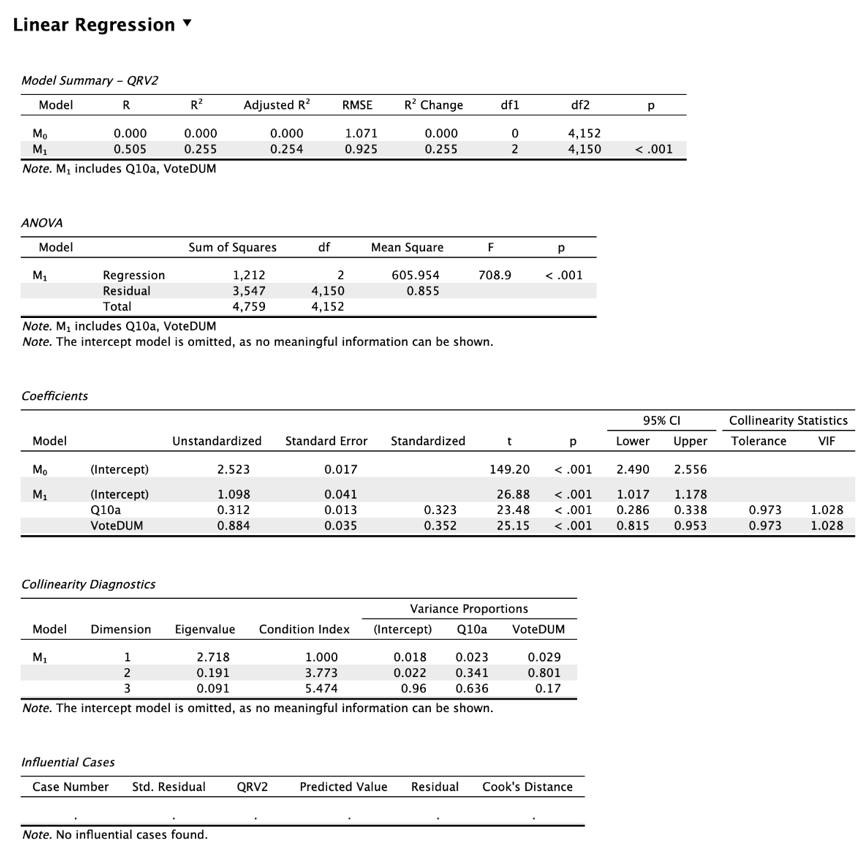
Service satisfaction as a predictor of overall government satisfaction
A core function of the public service is delivering services to Canadians. How governments perform in meeting service expectations is a critical factor in the public’s satisfaction and trust of government. A recent study by Ipsos Public Affairs Canada on the Future of Canada’s Federal Public Service examines the issue in an uncertain period for the public service.
By Gregory Jack, Senior Vice President, Ipsos Public Affairs CanadaIntroduction
Download the JSGS Policy Brief
Download the Disussion Questions
Much has been written of late about the declining state of public services in Canada. For many Canadians, this has included passport processing delays1, delays in Access to Information Requests2, unduly long wait times trying to make phone contact, and other reported issues. This comes at a time there are calls for the government to look at ways to reduce its workforce3.
One of the core functions of the public service is to directly deliver services to Canadians. Admittedly, the federal government delivers the least number of services of the three levels of government. But it is still responsible for many things Canadians rely on, including passports, EI, CPP, health services to Indigenous peoples on reserve, and helping Canadians file their taxes. Frustration with the tax agency is the latest example media have pointed to as a sign that cuts are having a negative impact on services, as CBC reports that only 5% of calls are getting through to CRA due to staffing cuts, and the union president says remaining staff are “exhausted and they’re crying for help.”4
Ipsos has been examining Canadians’ views of how the public service should be reformed through its new Future of Canada’s Federal Public Service study5. One area we have looked closely at is the current state of service delivery in Ottawa.
When I worked at the Privy Council Office in the early 2000s under the leadership of the late Mario Laguë and Maurice Jorre-de-St. Jorre, we examined the relationship between service satisfaction and overall satisfaction with government. Our operating assumption was that good service delivery to the public was one of the drivers of government satisfaction. We accounted for partisanship in the model, but we did not include the “vote question” in the analysis because the public service is not allowed to ask about vote preference. What we found then was a clear correlation between satisfaction with government and satisfaction with service delivery.
Recently, Ipsos conducted its 2025 election survey, which yielded a large sample of 8,224 and included questions about service satisfaction. This presented an opportunity to repeat the analysis, this time including intended vote in close proximity to this year’s election.
The relationship between service satisfaction and overall approval
Using three questions from our election poll which informed our Future of Canada’s Federal Public Service study, I looked at the statistical relationship between overall approval of the government and satisfaction with the most recent service experience.
I examined whether satisfaction with public service delivery predicts overall approval of the federal government. Analyses were restricted to respondents who had received a government service in the past year, as only they were asked the service satisfaction question (n = 4,153). I ran an ordinary least squares (OLS) regression to measure the relationship. Ordinary least squares (OLS) regression is a way to find the best-fitting straight line through a set of points on a graph, and measure how much one thing affects another. Imagine you have a bunch of points that show how two things might be related, in our case, how service experience might relate to overall government approval. OLS regression helps us draw a line that best represents the trend of these points. It does this by minimizing the overall distance between the points and the line, trying to get as close as possible to all the points at once. This line can then help us make predictions or understand the relationship between the variables better. In this case, I was trying to predict the effect of service experience on overall approval of government. The full regression results can be found in Appendix A.
Results
Our research unearthed some interesting dynamics between how happy Canadians are with government services and how they perceive the government’s performance. Specifically, we found service satisfaction accounted for 14% of the variance in approval of the government.
However, it was important not to overlook the role of partisanship. When survey respondents were asked about their view of the "Liberal government," their political leanings may colour their ratings. For example, Liberal supporters were indeed more inclined to view their service experiences positively, with 31% expressing high satisfaction compared to just 19% of other respondents, suggesting a potential bias when their preferred party is in power.
To get a clearer picture, our analysis introduced a factor for political alignment, categorizing respondents as either Liberal supporters or not. Once considered, both individuals' satisfaction with services and their political leanings stood out as significant factors, collectively accounting for 25% of how people judge government performance.
These insights echo findings from 25 years ago, and their relevance is underscored today by increasing public frustration over service quality. While I acknowledge the multifaceted nature of service and government satisfaction, this research underscores a discernible link: positive service experiences generally lead to better perceptions of government performance, even amidst other influential factors. Moreover, given public services' current challenges and declining quality, enhancing service delivery remains crucial. These findings serve as a reminder of the importance of prioritizing direct service provision to rebuild trust and improve government approval in these testing times.
There are obvious limitations to this analysis - service satisfaction is multifaceted, including what service a person is receiving, whether it's online or in-person, with a person or an online form, and the recency of the experience. Most important is whether the service experience ends with the person getting what they wanted. A successful outcome is something that would likely drive a positive service rating. While drivers of service satisfaction are important, this analysis looks at how service experiences drive government approvals, not what drives positive service experiences.
Approval of the government is likewise multi-faceted, impacted by everything from who the prime minister is, to world events and the state of the economy. It is also not clear that the relationship is unidirectional; poor service experiences may be influencing government approval, just as government approval may be influencing perceived service experience.
However, the directional relationship is clear. Those who have better service experiences rate the government’s performance better, even if a multitude of other factors come into play. And currently, service experiences are in decline. Indeed, several former senior officials in the federal government wrote in these pages that we can’t seem to get things done in Canada anymore6.
In fact, our Future of Canada’s Federal Public Service study finds just 34 per cent of Canadians say the federal government is effectively meeting their needs. Younger Canadians are particularly dissatisfied, with only 29% of Canadians aged 18-34 saying the federal government is effectively meeting their needs.
Our survey found several reasons for this. Among those who had received services, the most cited reason for dissatisfaction was unreasonable delay times at 64%, followed by challenges in reaching a real person at 54% and excessive paperwork or bureaucracy at 51%. These specific findings are weighted against the census to make them representative of the population.
Implications for policymakers
Reforming the public service will require significant changes at every level, but one way the public service can get Canadians back on side is by improving its overall focus on direct service delivery and increasing positive outcomes.
Public concern over service quality has emerged at a time when many other issues are facing the government, most especially our relationship with the United States. The ability of the federal public service to execute on the demands of the prime minister as Canada faces a tariff threat from the U.S., inflation and housing pricing pressures and a multitude of other problems. All this is happening at the same time as rapid growth in the federal public service over the last decade has created demands for limits to further expansion, if not outright reductions to the total number of public servants. Addressing those challenges - a situation Ipsos has termed the polycrisis - will in large part depend on the public service’s ability to deliver, both on the broad mandate Mr. Carney has set for himself, and on the “small things” like effective delivery of individualized services to Canadians.
All this is also coming in the context of a debate over public servants’ right to work from home. It is possible that lower service ratings are related to public servants not being in the office. This paper makes no argument either way about work from home, except to say that it is an issue Canadians are largely split on, with a slight tilt towards letting them work from home. Forty-one per cent of Canadians say they should be allowed to work from home, and 29 per cent say they shouldn’t be, with the remaining holding no opinion.
A recent op-ed from the Ottawa Board of Trade argued that the city of Ottawa risks being hollowed out by the federal government7, calling for a defined return to office policy. Our data suggests Canadians care more about the quality of services they receive than where they are delivered, but it is a problem distracting both government and its unions from tackling the big issues mentioned above[8]. A vibrant downtown Ottawa filled with public servants working in the office would be good for the city, but it is unclear whether it would result in better services to the Canadian public. We may soon have a more definitive answer, as Ontario has ordered public servants back to the office five days a week9, and it remains to be seen if the federal government will follow suit. In Ottawa itself, CTV reports that 85% of workers are on-site every day10.
As the public service embarks on tackling these wicked problems while trying to find a way to downsize and manage costs, it would do well to consider the impact of decisions on the quality-of-service delivery directly to Canadians. That is not an argument for more public servants or against cuts, nor is it an argument for adding additional people at the expense of technological solutions. Already the government is embarking on ways to do this, most notable through Artificial Intelligence11.
AI Minister Evan Soloman has tapped a Canadian company to suggest ways to improve services to the public through AI10. AI has promise but the minister should be cautious about public acceptance, as Ipsos' 2025 AI Monitor Study revealed that Canada ranks as one of the most apprehensive and the least enthusiastic nations regarding artificial intelligence, among 30 global markets surveyed. This, despite the fact that by a 2-1 margin, Canadians prefer digital over in-person services12.
Conclusion
Clearly, based on these findings, the interplay between service satisfaction and government approval is a pivotal area for public policy, especially in the face of ongoing challenges like service delays and evolving public expectations.
The implications are clear: improving public service quality is critical for rebuilding trust and enhancing government satisfaction. By addressing service issues amidst broader socio-economic challenges, the government can make headway in restoring public confidence.
As the federal government navigates complex issues such as international relations, inflation, and technological advancements, focusing on enhancing service experiences offers a tangible pathway to restoring public confidence.
While addressing broader socio-political factors remains crucial, the insights from our study highlight the immediate impact that service reform can have on citizen satisfaction, ultimately reinforcing the value of responsiveness and efficiency in public service management, as well as enhancing trust in government. Policymakers must balance technological integration with genuine enhancements in service quality, ensuring that innovations align with public expectations and contribute to a more effective, citizen-centered government.
Endnotes
[1] Wait times for Canadian passports and study permits: https://www.blogto.com/city/2025/04/wait-times-canadian-passports-study-permits/
[2] CBSA’s Access to Information woes (Hill Times): https://www.hilltimes.com/story/2024/05/08/cbsas-access-to-information-woes-continue-with-12000-requests-inaccessible-requestors-encouraged-to-resubmit/420085/
[3] Think tank calls on federal government to cut 64,000 public service jobs (CTV): https://www.ctvnews.ca/ottawa/article/think-tank-calls-on-federal-government-to-cut-64000-public-service-jobs/
[4] Fed-up Canadians say no one at CRA is taking their call. The union says it’s set to get worse (CBC): https://www.cbc.ca/news/business/canada-revenue-agency-call-centre-job-cuts-1.7615306
[5] Ipsos – Future of Canada’s Federal Public Service study (June 2025): https://www.ipsos.com/sites/default/files/The%20Future%20of%20Canada%27s%20Federal%20Public%20Service%2C%20ENG%20Web%20Version%2C%20June%202025.pdf
[6] Policy Brief – How to fix Canada’s public service (University of Saskatchewan School of Public Policy): https://www.schoolofpublicpolicy.sk.ca/research-ideas/publications-and-policy-insight/policy-brief/how-to-fix-canada-policy.php
[7] Ottawa Board of Trade op-ed – City of Ottawa risks being hollowed out: https://www.ottawabot.ca/2025/07/21/op-ed-the-city-of-ottawa-risks-being-hollowed-out-by-the-federal-government/
[8] Tim Sargent, Canadians are very unhappy with the federal public service (Macdonald-Laurier Institute / The Hub): https://macdonaldlaurier.ca/canadians-are-very-unhappy-with-the-federal-public-service-and-for-good-reason-tim-sargent-in-the-hub/
[9] Ontario orders public servants back to the office (CBC): https://www.cbc.ca/news/canada/toronto/ontario-public-service-work-from-office-mandate-remote-1.7608742
[10] 85% of City of Ottawa workers are on-site daily (CTV): https://www.ctvnews.ca/ottawa/article/premier-wants-municipal-employees-in-office-5-days-a-week-85-of-city-of-ottawa-employees-onsite-every-day/
[11] Cohere AI public service project (Global News): https://globalnews.ca/news/11341010/ottawa-cohere-ai-public-service/
[12] Ipsos AI Monitor 2025: https://www.ipsos.com/en-id/press-release-ipsos-ai-monitor-2025
Appendix A: Detailed OLS Regression Results

Model 1: Service Satisfaction Only

Model 2: Service and Vote Dummy Variable

Notes
- Diagnostic checks indicated no violations of OLS assumptions: residuals were approximately normally distributed, variance appeared homoscedastic, multicollinearity was negligible (VIF ≈ 1.02), and no influential cases were detected using Cook’s Distance.
- The regression was run on unweighted data, as the goal was to assess relationships rather than estimate population parameters, and survey weights can distort standard errors in OLS models. We repeated the model on weighted data and found similar results; the results presented here are on unweighted data unless otherwise specified.
Appendix B: Question Wording
QRV2 “Thinking about the Liberal government, from what you have seen read or heard, would you say that you strongly approve, somewhat approve, somewhat disapprove or strongly disapprove of their performance?”
Q10a “How satisfied or dissatisfied were you with the service provided by the federal government?”
VoteDUM: “Thinking of how you feel right now, if a FEDERAL election were held tomorrow, which of the following parties' candidates would you, yourself, be most likely to support? If you have already voted at the advance polling, please indicate which party you voted for.”
RECODED AS LIBERALS=0 AND ALL OTHER PARTIES/WOULD NOT VOTE/DKNR=1
Gregory Jack

Gregory Jack is a senior vice president at Ipsos Public Affairs, where he leads Ipsos’ public affairs practice in the Ottawa region, focusing on government policy and political trends. In previous senior roles in both Canadian and Alberta governments, Greg has led key communications initiatives and research projects on energy, Canada-US relations and service delivery. He holds advanced degrees in Energy Policy and Public Administration, along with undergraduate degrees in political studies and philosophy. He and his wife live in Aylmer, Quebec.


